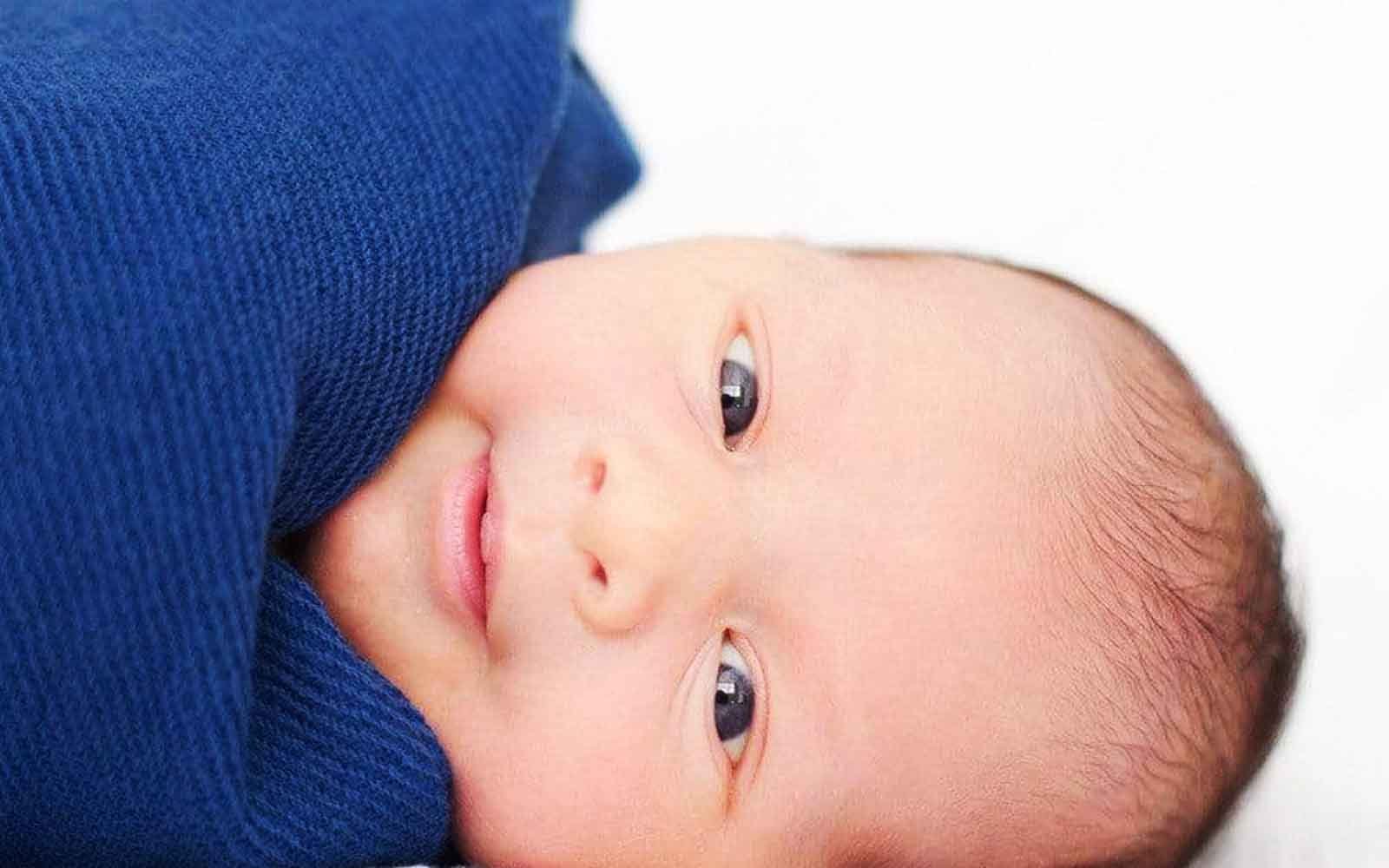
Patting a baby to sleep
You’ve hummed 'Twinkle Twinkle Little Star' (albeit off-key), juggled him vigorously in your arms while you count spider webs on your ceiling, then placed him down like a bomb disposal expert just as he’s about to drop off to sleep … only to have those eyes dart open. Again!
Perhaps you’ve even resorted to driving around in your car in the middle of the night, like some parents who come to us?
The fact is, most babies under four months old will need some assistance from you to fall asleep. And that’s totally normal.
You may be concerned about forming negative sleep associations and ‘bad habits’, and may be conscious of the pressure to ‘self-settle’, but the truth is at this age they are still learning the art of falling to sleep.
This article lets you in on a little secret. A Little Ones secret. The art of patting, or 'side settling' your new baby to sleep.
In this article:
- Is your baby unsettled for a reason?
- Why does patting put a baby to sleep?
- How to settle your baby with patting
- How to move away from patting
- Other self-settling techniques
Need support figuring out your newborn's sleep?
Being a new parent can be overwhelming. You probably have lots of questions. Find the answers to all your questions and more in our Sleep App to future-proof your newborn's sleep.
Choose your Sleep Solution
Is your baby unsettled for a reason?
If your baby is crying at every nap or bedtime or just seems very unsettled, or is plain refusing to close her eyes, it may well be that she is under or overtired.
Browse our blog on under and overtiredness for more details. But it’s likely that their awake times just need a bit of a tweak to ensure they're totally ready for sleep.
Because a baby who isn't really ready to rest will never settle easily - with or without our patting technique.
We know that it’s a real balancing act, and when you are at your wits end with tiredness it’s so hard to know which way to turn. For some parents with ‘bad sleepers’, nap or bedtime will actually be dreaded. And that’s not what any new parent wants to experience.
To help get this balance right, our Sleep Programs follow the natural rhythm of your baby's day, leading to much easier settling and better sleep as a result.
And if you pair this with our “patting” / side settling technique, you could actually find yourself enjoying bedtimes.
Why does patting a baby put them to sleep?
Gentle, rhythmic patting is so simplistic and instinctual it may have been used by cavewomen to settle babies. But perhaps this simple art of tapping has been a bit lost, given all of the sleep training advice there is out there.
It’s thought by some that gentle, repetitive tapping on the bum is said to mimic the sound and rhythm of a mother’s heart beat in the womb.
If your baby was head-down-bum-up like most are in the third trimester, their wee bottom’s are what was closest to Mom’s heart in utero. The feeling is calming and relaxing for babies. And when your little one is in that state it’s easier for them to slip off to sleep.
This technique is a great way of settling baby into a cot, which we recommend you do for at least one sleep a day so they are familiar with their bed and surroundings for settling in the future.
How to settle your baby by patting
We have a great side-settling patting technique that we recommend all parents try, to settle their babies who are less than four months old.
We’re not talking pressure points or divine energy systems, just some good old-fashioned gentle bottom tapping and a few other things.
Here are the easy instructions, step by step:
- Swaddle bubs tightly
- Put her in a completely dark room (babies find the dark SUPER calming and it promotes the production of melatonin - one of the hormones responsible for sleep)
- Play loud white noise, or use our Baby Sleep Shhh track
- Put baby in her bassinet and roll her onto her side, supporting her tummy with one hand
- With the other hand, rhythmically pat (quite forcefully) her bottom in an upwards motion. It may help to softly sing a song at this point. (Don’t worry if you don’t sound like Michael Bublé).
- At the same time, if possible, rock the bassinet in a rhythmic motion
- Once baby falls asleep, roll them onto their back for safe sleeping.
If you don’t have the Baby Sleep Shhh audio track, or any other white noise, you can replicate this by shhh-ing loudly in baby’s ear while doing the patting and rocking, instead of singing.
Say goodbye to sleepless nights.
Join over 800,000 families worldwide who are enjoying excellent sleep with our Sleep Programs, created by experts in the field of pediatric sleep.
Choose your Sleep Solution
Here is our video on how to do it. The noise in the video is our Baby Sleep Shhh track.
Warning: this may make viewers feel VERY sleepy…
Help - my baby won’t go to sleep without being patted!
At some point you may have to think about how to stop patting your baby to sleep so they don’t become completely dependent on it.
So, if you’re past the first three to four months (congrats - you made it!), you can think about being able to put your baby down awake but ready for sleep, and let them do the final part of falling asleep on their own.
But that may be easier said than done - like most elements of parenting, right?
The good thing about this side settling/patting technique is that you can just start to reduce the patting time quite quickly.
Each night limit your ‘pat time’, until you can stop when she’s still awake - just. When you’re ready, stop patting, but leave your hand on their bottom for a minute for reassurance. Then creep out the door quietly like a jewelry thief, with the confidence she will do the final leg by herself.
If she cries, we’d recommend that you give her chance to resettle herself for a few minutes, and then go back in and do the patting again, but not until she’s asleep.
You will hopefully have adopted a white noise machine as well, and perhaps a small luvey they love to cuddle that smells like you. It's great to use familiar things they associate with calm sleep, as your patting slowly reduces.
Other self settling techniques
At this point we should point out that at Little Ones we are NOT self-settling army colonels! If you enjoy cuddling your baby to sleep (it’s understandable - she’s gorgeous!), or have your own techniques sorted to settle your baby, that’s awesome.
But, if you want a little more assistance speeding up the settling process and allowing yourself as parents/caregivers more time (and sleep) yourselves, then there are certainly options.
Self-settling after four months in particular should be thought of as a skill your baby needs to learn, that doesn't simply develop overnight. Our babies all need coaching and the space to learn to do it themselves. A realistic strategy and some consistency will help you out.
Rest assured that there are definitely options other than “crying it out”, and in another article, we give you more tips on how to gently teach your baby to put themselves to sleep, without a daunting battle.
And if you decide you’d like more detailed, personalised support, that’s exactly what our Sleep Programs are designed for!
------------
References:
Pavlov, I. P. (1928). Lectures on conditioned reflexes. (Translated by W.H. Gantt) London: Allen and Unwin.
http://www.parentingscience.com/newborn-sleep.html
https://www.ncbi.nlm.nih.gov/pubmed/26035139
https://www.ncbi.nlm.nih.gov/pubmed/21051245
https://www.ncbi.nlm.nih.gov/pubmed?cmd=historysearch&querykey=15

Receive product and services updates, promotional offers and other marketing communications based.





